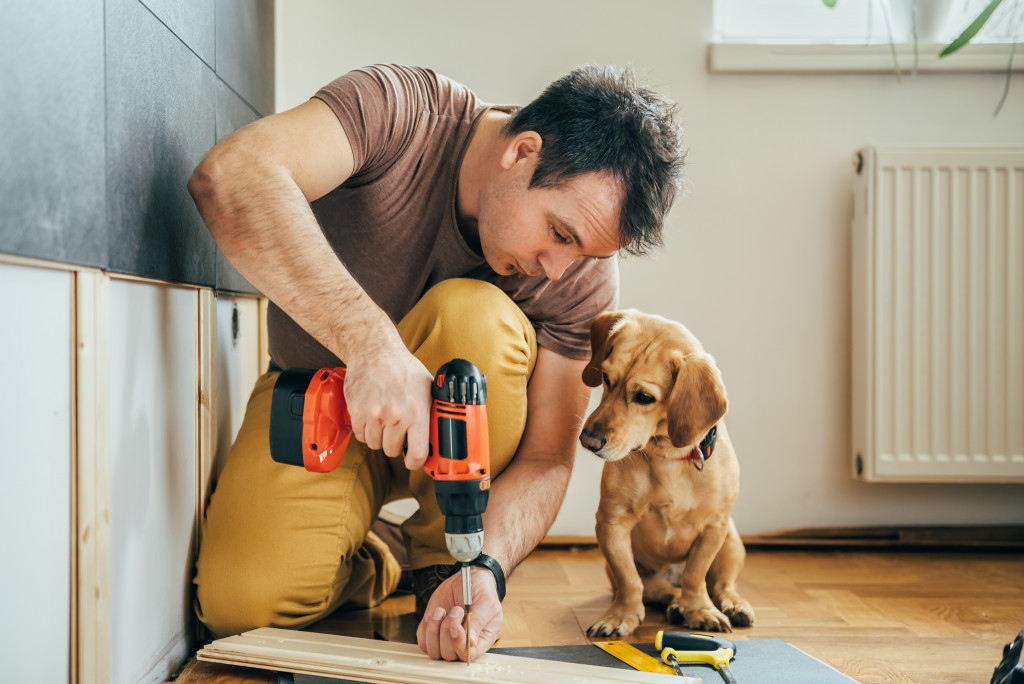The US Department of Housing and Urban Development and Census Bureau released statistics on residential construction for October 2022. The period saw 1,526,000 building permits issued, with 1,425,000 projects already started. The same month also saw 1,339,000 projects completed. The figures represented a decrease from the previous month by at least 2.6 percent and 10.1 percent of the prior year.
Even though many factors contributed to the decline in construction projects, companies can use technology to get them back on track. Technology allowed businesses to become more efficient and cost-effective, and the home building industry is no exception. By using technology to streamline processes and reduce waste, businesses in the home building industry can increase their profits while providing high-quality homes for their customers. Here are some ways technology is used to facilitate homebuilding.
3D Printing and Modeling
Using 3D printing and modeling technologies, homebuilding businesses can quickly generate accurate plans for custom-tailored houses to match their customers’ needs. This means that customers can get exactly what they want from home without sacrificing any desired features or amenities. Not only does this save time and money for both businesses and customers, but it also ensures that homes are built with precision and accuracy—reducing costly errors during construction.
Moreover, using 3D printing and modeling technologies to create house plans allows businesses to quickly create multiple versions of a plan. It also allows them to test various layouts before settling on one that works best. This can save time and money in the long run as designers can quickly identify and address any potential issues before construction begins.
Additionally, 3D printing and modeling technologies can generate accurate cost estimates for building materials, ensuring that customers know exactly what they’re getting into before committing to a project. All this adds to significant time and cost savings for homebuilding businesses, allowing them to focus on delivering superior-quality homes to their customers.
Automated Machinery
Several types of automated machinery have been developed specifically for use in the homebuilding industry. For example, companies can use reliable industrial robots to produce pre-fabricated housing components. The use of robots can make house-building faster and more efficient. It also reduces work-related accidents and increases productivity in the business. Automated machinery also streamlines the construction process and increases quality control by ensuring that all components are built to exact specifications. Additionally, automated machinery can reduce the need for manual labor, making it easier and faster to build a house.
Using automated machines reduces the environmental impact of homebuilding since they require fewer resources, such as fuel and materials. By reducing the energy and resources used, automated machines help make homebuilding more sustainable.
Automated machinery also reduces waste by ensuring that all components are built and assembled correctly. This ensures that fewer materials end up in landfills or are otherwise wasted.

Virtual Reality
Homebuilding businesses have increasingly adopted virtual reality (VR) technology to allow prospective buyers to “walk through” a model house before construction begins. VR also allows potential buyers to get an up-close view of all of the features included in a house without having to visit an actual physical site—which saves time and money for everyone involved in the process.
Additionally, VR technology allows potential buyers to customize certain aspects of the house, such as paint colors or furniture placement. This ensures that customers get exactly what they want from their new home. Many home builders are now partnering with virtual reality companies to create unique and customized customer experiences. With the help of this technology, potential buyers can get a more accurate sense of how a house will look and feel when it is completed.
Aerial Drones
Aerial drones are becoming an increasingly popular tool in homebuilding. They can be used to survey the land for potential building sites, plan and map out the construction project, and monitor the building’s progress. Drones can also be used to take aerial photographs and videos of the completed project, which can be used for marketing or insurance purposes.
Drones can help builders to save time and money by quickly assessing potential building sites, allowing them to determine the best approach for a project. Drones with 3-D mapping capabilities can help plan construction projects accurately, saving builders from costly rework due to inaccurate measurements. Furthermore, aerial drones can provide regular updates on the progress of construction, allowing for cost and time savings.
Technology has revolutionized many industries over the past few decades, including homebuilding. By using modern technologies, businesses in this sector have significantly reduced costs while increasing efficiency—allowing them to provide high-quality homes at affordable prices for their customers. Harnessing these technologies offers numerous benefits for businesses and consumers alike—ultimately making it easier for people worldwide to own their dream homes.







